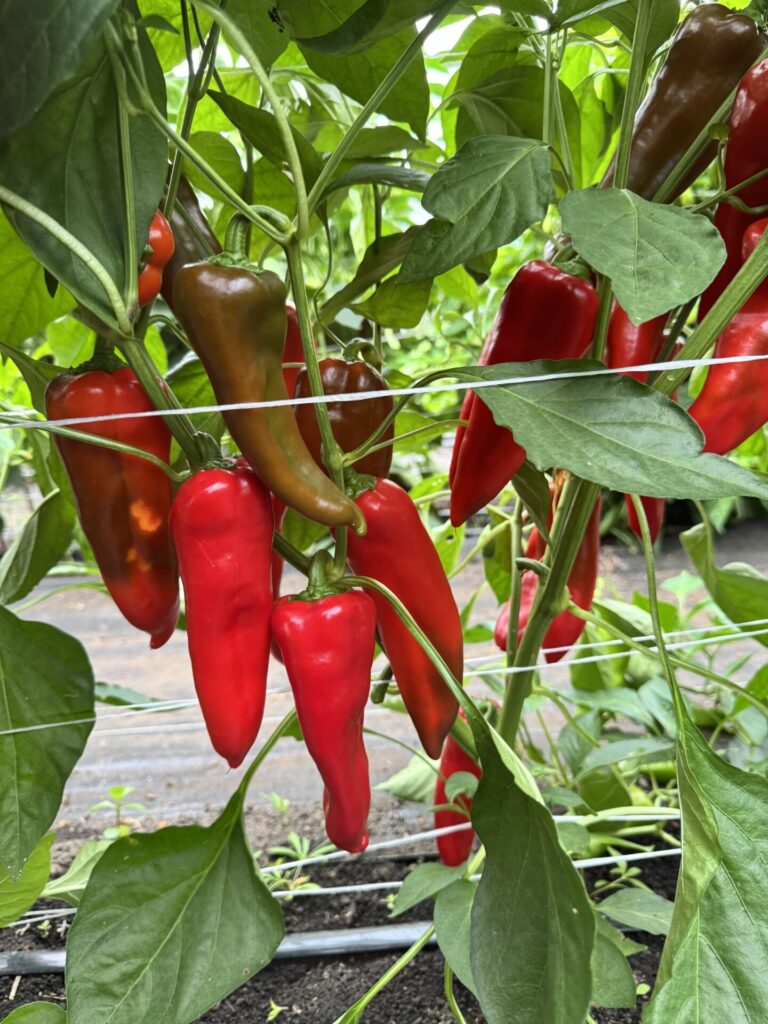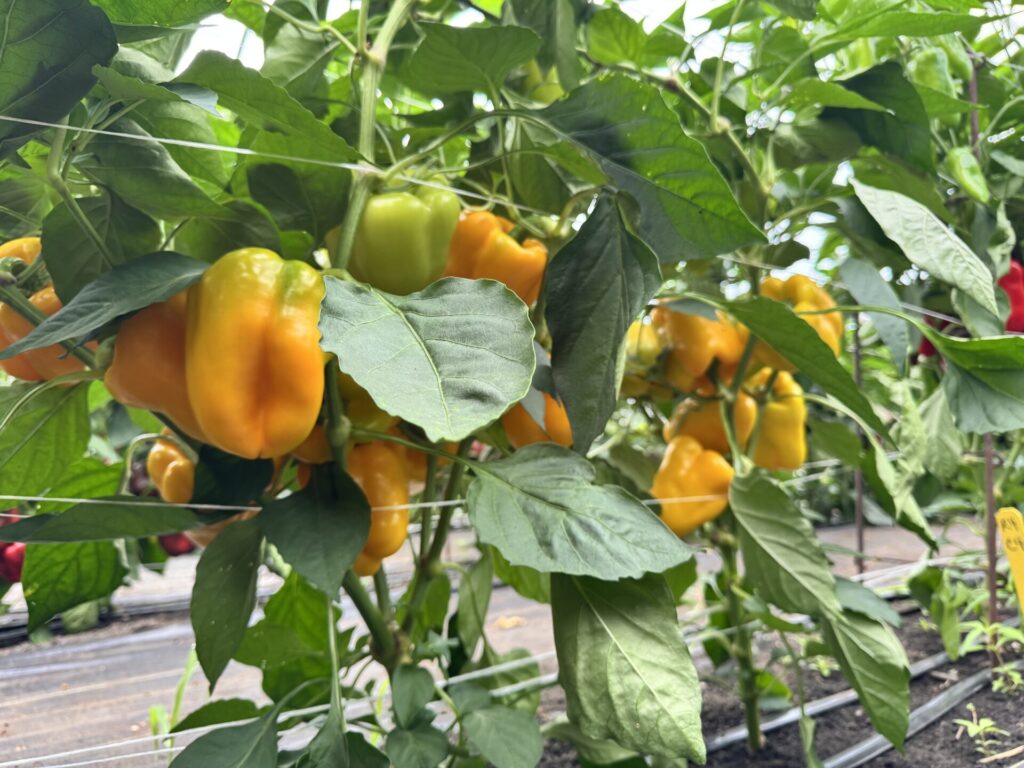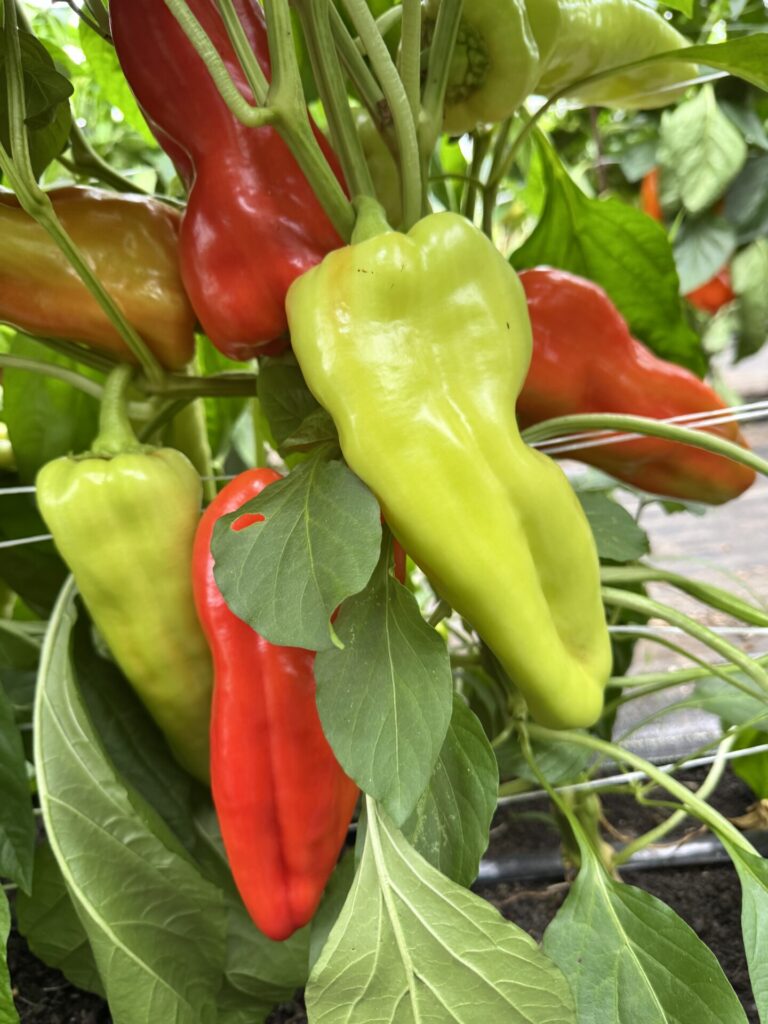Dear Valued VCH Readers,
Welcome to this week’s edition of the Vegetable Crops Hotline!
What a difference a few days can make! After weeks of hot, humid weather that kept us busy managing disease pressure, we’re looking at a dramatic atmospheric shift that will bring much cooler temperatures to close out August. The National Weather Service predicts a nearly 100% chance of sustained below-normal temperatures through August 26-30, with some northern Indiana locations potentially seeing lows in the upper 40s—the coolest we’ve experienced since early June.
This weather turnaround brings both relief and new considerations for growers. Corn earworm monitoring shifts focus entirely to late-planted sweetcorn, where thresholds drop back to just one moth per night with green silk present. It’s also an opportune time to think beyond this season’s harvest and consider how cover crops could benefit your operation—whether you’re managing acres or tending a home garden.
This week’s newsletter covers these timely pest management updates and explores the multiple benefits cover crops can offer as we transition toward fall. We’ll also highlight upcoming educational opportunities, including a hands-on Cleaning and Sanitation Workshop at the Purdue Student Farm on September 8th and the Southwest Purdue Ag Center’s Pumpkin Field Day on September 17th. Plus, we’ll share a valuable resource for tracking the vegetable price index.
As we navigate this seasonal transition, stay alert to how these cooler temperatures might affect your crops and pest populations.
Pepper harvest is now in full swing at the Purdue Student Farm. We initiated harvest on August 12. One of the tapered pepper varieties that shows promising results is Cornito Rosso (Figure 1). It is producing a lot of fruit, and the fruit size is very uniform with few defects. Once again, Flavorburst is not disappointing (Figure 2). It produces early, with many fruits that are free of blossom-end rot. An interesting find is the sweet pepper variety Aconcagua. It produces very large fruit, and so far, there is no sign of any blossom end rot (Figure 3). The results of the variety trial will be discussed at our upcoming winter meetings and will be published in the Midwest Vegetable Trial Report.
Growers and Purdue Extension Educators
Your input and expertise make this newsletter a truly useful resource. If you have hot topics you’d like us to cover, success stories to share, or questions for our Extension specialists, please get in touch with us at plangenh@purdue.edu or contact the specialist directly. We also welcome high-quality photos of pest issues, unusual symptoms, or innovative production practices you’ve implemented on your farm.
Website Links in Newsletter Articles
We frequently include links to websites or online publications. If you are unable to access these resources, please don’t hesitate to contact your local Purdue Extension office or us to request a hard copy of the information.
Midwest Vegetable Production Guide
The 2025 Midwest Vegetable Production guide is now available for growers to visit online at mwveguide.org, or you can download and print a guide from your computer at mwveguide.org/guide. The guide can also be purchased for $15 per copy. Contact your Extension Office or Stephen Meyers (slmeyeres@purdue.edu) directly to buy a copy.
Midwest Vegetable Trial Reports
Are you still considering purchasing vegetable seeds? The Midwest Vegetable Trial Reports feature many articles to help you make an informed decision. The resource also hosts research results related to production.
Best regards,
Petrus Langenhoven
Clinical Assistant Professor and Vegetable Extension Specialist
Department of Horticulture and Landscape Architecture
Purdue University


